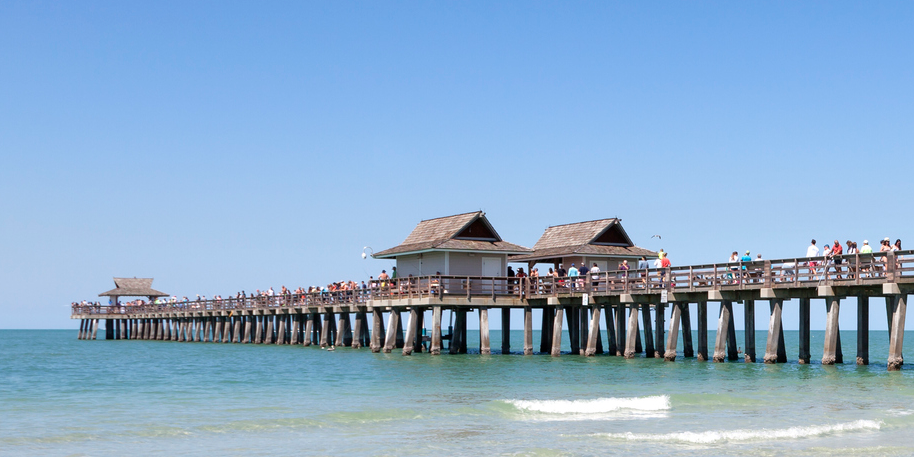Stay alert to prevent fraud! If you’re unsure about any call, email, or text claiming to be from the Bank, contact us directly using a trusted number. For tips on staying safe, visit our Financial Resource Library.
Stay alert to prevent fraud! If you’re unsure about any call, email, or text claiming to be from the Bank, contact us directly using a trusted number. For tips on staying safe, visit our Financial Resource Library.

Union Station, Springfield, IL

Hagel 1891, Mt. Sterling, IL

Carthage College, Carthage, IL

Bayview Bridge, Quincy, IL

Bailey's Opera House, Camp Point, IL

Piasa Bird, Alton, IL

Naples Pier, Naples, FL
Union Station, Springfield, IL

Union Station, established on January 2, 1898, by the Illinois Central Railroad, is a historic train station in Springfield, Illinois situated across from the Abraham Lincoln Presidential Library and Museum. Designed in the Romanesque Revival style by architect Francis T. Bacon, it features decorative stone and brickwork, a soaring clock tower, and original elements like quarter-sawn oak paneling. Closed to the public since the departure of the last passenger train in 1971, Union Station faced restoration in 1985, becoming a boutique shopping mall. The clock tower, 110 feet tall, was rebuilt in 2006 by the Electric Time Co. The clock, incorporating GPS technology, chimes every half hour. Union Square Park, adjacent to the station, hosts free events, including performances by Civil War re-enactment groups and various musical acts. The park, designed by White & Borgognoni, showcases a gazebo, pergolas made from ironwood, and notable statues, including one of Abraham Lincoln by Mark Luden.
Hagel 1891, Mt. Sterling, IL

Hagel 1891 is a casual restaurant, featuring classic American food with a modern, flavorful twist. They also offer a wide selection of California and local wines, premium liquors, and draft and bottled beers.
It features a blend of casual and fine dining options offered in a unique, rustic setting. Hagel 1891 is located next to Dorothy’s Market in the historic Hagel building. Brothers Joseph and William Hagel constructed the building as a hardware and furniture store in 1891.
Many Mt. Sterling residents may remember visiting the hardware store at Christmas to see the holiday toy train display. Hagel 1891’s décor reflects the building’s rich history.
Now, as Hagel 1891, it is a full service restaurant proud to bring downtown Mt. Sterling one step closer to becoming a destination for visitors throughout the region.
Carthage College, Carthage, IL

The legend of Carthage College began in 1870. After two short stints in Hillsboro, Ill. and Springfield, Ill. in the mid-1800s, the United Lutheran Church of America moved its Midwestern institution to Carthage, Ill. at the insistence of the then-burgeoning town’s residents.
“They (the Lutherans) were wanting to find one in the Midwest, and the Carthage people promised them the ground and money towards the building,” said Kim Nettles, president of the Kibbe Hancock Heritage Museum board. “Pretty much the same story as today — they got financial incentive to put it here.”
In the 1800s, the Lutheran church struggled financially, and according to Michael Lowe, a history graduate assistant at Western Illinois University, it could not refuse Carthage’s offer.
“It was in some ways out of necessity,” Lowe said. “The money situation wasn’t great for the Lutheran church when it decided to do this. Carthage was kind of seen as this unique place of opportunity. The railroad was just being built there.”
The railroad proved to be instrumental in the college’s development. Students from Wisconsin and the Chicago area eventually took the train to get to Carthage. This aspect, combined with Carthage’s location, made the town a favorable option for the Lutheran church.
“The towns that are prominent today are not necessarily the towns that were prominent then,” Nettles said. “So, this was probably more of a center of gravity, and they (the Lutherans) were probably looking at ease of transportation and being equidistant from other important points.”
Aside from its relation to other towns, the church also viewed Carthage as a place that would promote the one thing the college stood for: education.
“The idea in higher education, from what I’ve read, at that time was that urban society — it was kind of a Gilded Age idea — can distract you and rural life, pastoral life is more conducive to independent thought, relaxation and study, and Carthage was very much seen as a place like that,” Lowe said. “That was part of why the trustees decided to locate the college in Carthage.”
Though the college was chartered in 1870, classes were not held on the campus until after the Old Main was constructed in 1872. In the meantime, buzz built around the anticipated institution.
“I’ve read a lot of newspaper accounts, and everyone reports all the positive, brilliant happenings of the college and this rapid expansion of the college, and as the addendum they asked for money because they didn’t have the place built yet,” Lowe said. “It really did take two years, and Carthage citizens were really influential in that process.”
During the two-year period, the college and Carthage hosted a cornerstone ceremony and parade in 1871 to celebrate the future school. The parade, reportedly attended by 5,000 people, included church officials and community members eager to show support for the college.
“It was also the Odd Fellows and different citizen groups like that — local people who cared and thought that the education of Christian virtue but also education in the classical tradition would be great for the community,” Lowe said. “It would bring people into Carthage and make it a business center, hopefully, in addition to being a host for the college.”
Photo courtesy of carthage.edu
Bayview Bridge, Quincy, IL

Opened to westbound traffic on August 22, 1987, the Quincy Bayview Bridge is a cable-stayed bridge over the Mississippi River. It spans 4507 feet connecting Illinois and Missouri via US-24 and is supported by 56 cables from its 182 foot tall main towers. In 2015, on its 28th Anniversary and in conjunction with the 175th Anniversary of the City of Quincy, the Quincy Bayview Bridge was illuminated by 86 color-changing LEDs for the first time, bringing a new element of light and beauty to the grand structure.
Bailey's Opera House, Camp Point, IL

Built by Thomas Bailey, one of Camp Point's four founding fathers, Bailey's Opera House opened on December 16, 1853. Although it is now home to a popular local restaurant, it originally hosted a variety of notable performers both from the area as well as many who would come in by train to share their talents. Mr. Bailey deeded the Opera House to the Town Trustees as well as the land for Bailey Park.
Piasa Bird, Alton, IL

The Piasa Bird once terrorized the Illini Indians near what is now Alton, Illinois. Swooping down, it would snatch victims in its talons and carry them back to a cliffside cave. According to one translator, its name meant, "The bird that devours men."
The first explorers in the area were startled to see a painting of the Piasa on a limestone bluff overlooking the Mississippi. It was had horns, red eyes, fish scales, a long tail, and a snarling, bearded face. The painting didn't last long, however, as the Illini would fire arrows and bullets at it whenever they passed.
The painting was destroyed and recreated several times, most recently in 1999 where it stands 22-feet high and 48-feet long.
Naples Pier, Naples, FL

One of Collier County's most historic landmarks, the Naples Pier endures! Since its original construction in 1888 as a passenger and freight dock, it continues to rise from the Naples Beach shore and surf again and again after repeated hurricane batterings, most recently from Hurricane Ian in 2022. With each reconstruction, it debuts as a slightly more modern structure while also retaining the history and charm that means so much to community residents and visitors from all over the world.
Leaving ucbbanks.com
The link you selected is to a third-party or affiliate site that is not maintained or operated by United Community Banks. By clicking this link you are leaving the Bank's website. Whenever possible, this link will open a new browser window and leave your United Community Banks Web session in the original browser window. Please note, United Community Banks makes no endorsement of these sites and does not assume responsibility for the information or any use you may make of this information.
Leaving ucbbanks.com
The link you selected is to a third-party or affiliate site that is not maintained or operated by United Community Banks and any non-deposit products: are not insured by the FDIC; are not deposits; and may lose value. By clicking this link, you are leaving the Bank's website.




